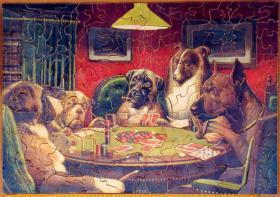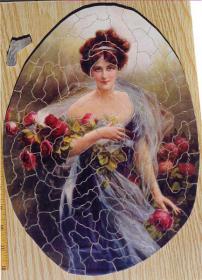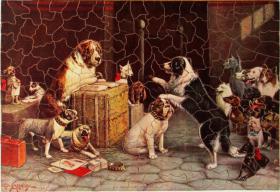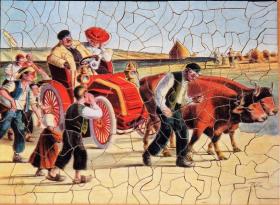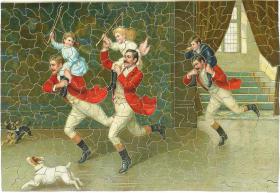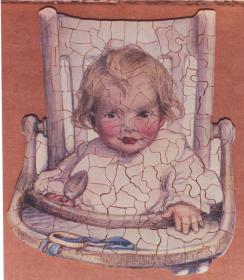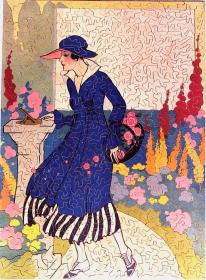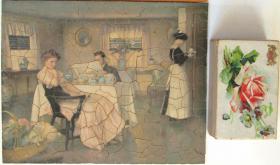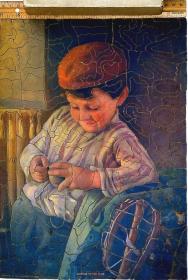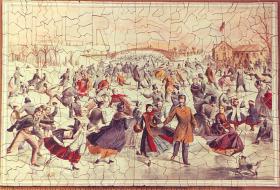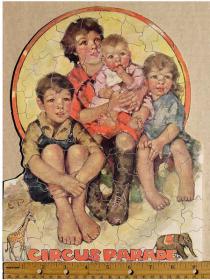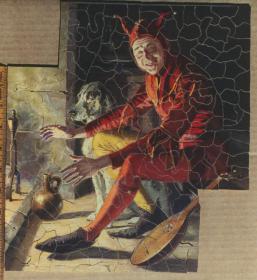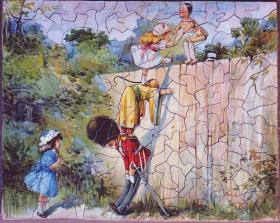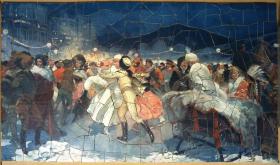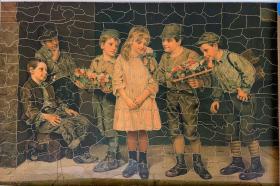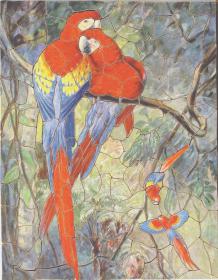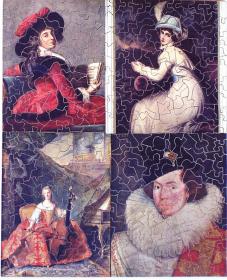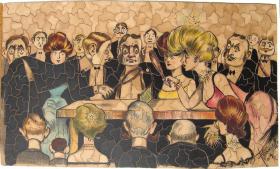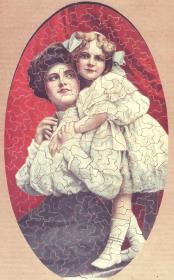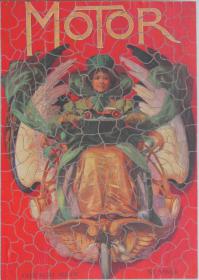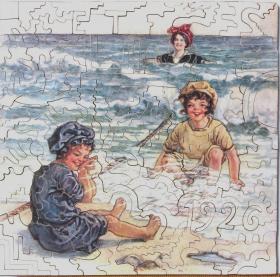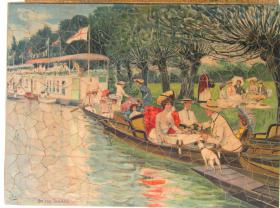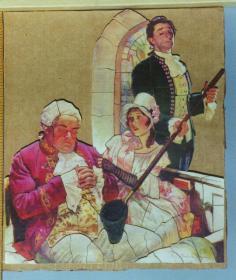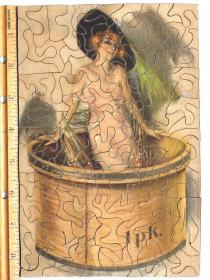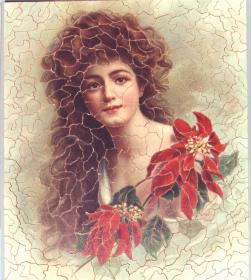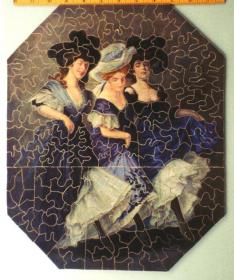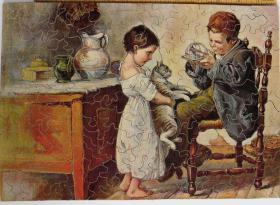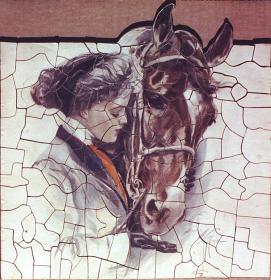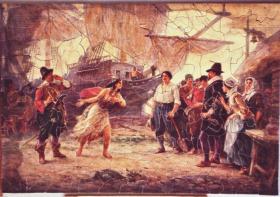The first great period for puzzles cut for grownups is called the “1909 era”. It actually began in Eastern Massachusetts in 1907 when a young woman (whose name has been lost) began cutting colorful magazine covers into 100-200 piece puzzles and selling them at a fair to benefit a children’s hospital. This touched off a craze that spread to Boston and then to New York and other major American cities by Spring 1908 and across the Atlantic to London by 1909. Prior to this, nearly all puzzles made in the 18th and 19th centuries were for children, and the few cut for grownups were either not marketed commercially or did not “catch on”. The craze continued for another couple of years, marked by mostly women cutters making non-interlocking puzzles cut from solid wood along the color lines in the picture. These traditions played out over the next two decades, as quality plywood rapidly became more available, scroll saws improved, assemblers demanded more interlocking puzzles with figure pieces and men entered the business. For more information, see “The Jigsaw Puzzle: Piecing Together a History”, Anne D. Williams, Berkley Books (2004), Ch. 3. Brief summaries from Ms Williams’ featuring three important early women cutters may be found at Isabel Ayer, Margaret Richardson and Marjorie Bouve, along with images and descriptions of some of their puzzles. Images and descriptions of puzzles cut by many 1909 era makers are displayed below in alphabetical order by maker or brand, otherwise alphabetically by title if maker and brand are unknown.
